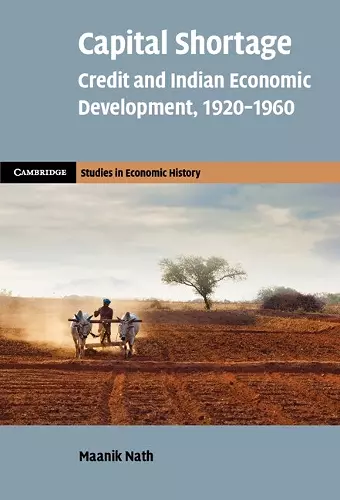Capital Shortage
Credit and Indian Economic Development, 1920–1960
Format:Hardback
Publisher:Cambridge University Press
Published:10th Aug '23
Currently unavailable, and unfortunately no date known when it will be back
This hardback is available in another edition too:
- Paperback£29.99(9781009359047)

Bridging history and development, a study of credit scarcity, low investment and widespread poverty in colonial and postcolonial India.
A study of capital shortage and widespread poverty in colonial and postcolonial India. Connecting environmental, institutional and political economic theories to history, Maanik Nath offers new insights on why credit was scarce, and how this scarcity affected development patterns in the Global South.The great majority of the population in colonial and postcolonial India lived in the countryside and were poor. Many were unable to find gainful work outside agriculture and remained dependent on a livelihood that provided only subsistence, and a precarious one. Seeking the roots of persistent poverty, Maanik Nath finds that the pervasive high cost and shortage of capital affected the peasant's ability to invest in land. The productivity of land, as a result, remained small and changed little. Bridging economic theory and historical evidence, Capital Shortage shows that climate, law, policy design, and interactions between these factors, perpetuated a stubborn cycle of low investment and widespread deprivation over several decades. These findings can be tested against credit and development in preceding and succeeding periods as well as positioned in comparative global context.
ISBN: 9781009359078
Dimensions: 235mm x 158mm x 19mm
Weight: 510g
250 pages